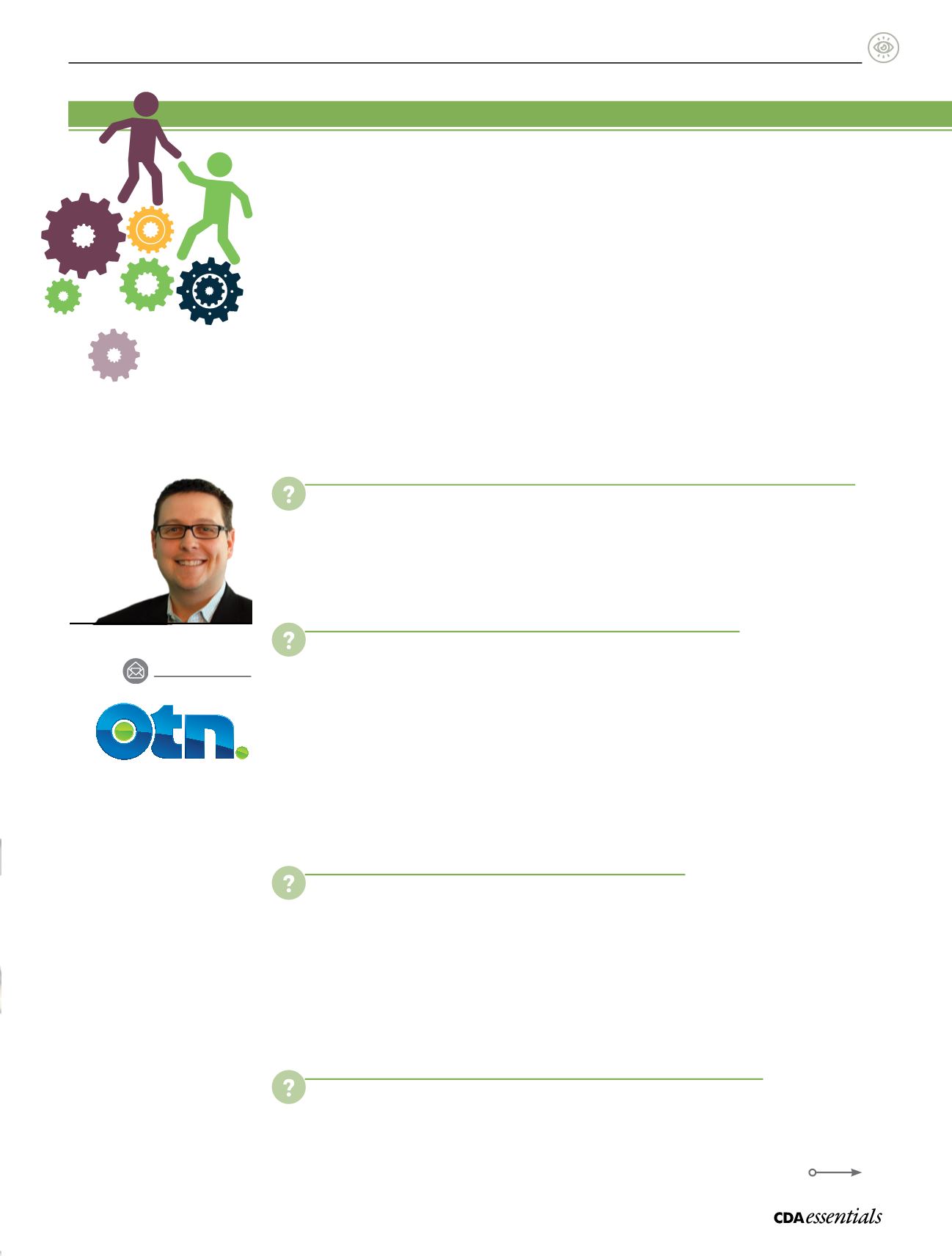

23
Volume 3 Issue 6
|
I
ssues and
P
eople
thought leaders series
Dr. Jeff Glaizel
jglaizel@otn.caWhat are the most important developments in telemedicine in dentistry today?
Technology is coming at us faster than we know how to deal with it. Part of the work we do
at OTN is to identify, validate and then scale those solutions that show promise in health care.
But it isn’t about technology—it’s about workflow, integration with the clinician’s practice,
and serving the needs of the health care system.
What sorts of activities is telemedicine facilitating in Canada?
I can tell you specifically about Ontario; OTN is the largest network in the world doing
telemedicine. We had 600,000 clinical events last year, which means any interaction between
a patient and a provider, a provider and provider, or a case collaboration on a patient detail.
It’s an interaction that could take place on different levels; it could be a video discussion
about your health or it could involve remote patient monitoring. It’s amazing what we
can do. For example, right now in Ontario it takes about 3 months from referral to get an
appointment with a dermatologist. But OTN has a teledermatology program where a general
practitioner can take a picture, upload it, and receive a response from a dermatologist in
about 2 days.
What factors are driving telemedicine forward so fast?
There are 3 main factors. The first one is that patients want it. They don’t want to go to a
doctor’s office; if they can do their banking online, why can’t they consult a doctor online?
The second driver, from the government’s side, is cost. The cost of delivering health care
services is very expensive. It’s a question of how to provide excellent care in the lowest cost
setting with the lowest cost provider. And thirdly, from the physician’s side, there is demand
for their services and a need to support the care of more patients. The efficiency that comes
with digital technology can help support these demands.
What are the potential applications of telemedicine for dentistry?
Teledentistry in the future will be about a dentist, in collaboration with the dental team,
interacting with the patient about their health care needs. For example, they could interview
Will teledentistry transform
our profession?
Dr. Jeff Glaizel is a general dentist in private practice in Toronto and also serves as the
Consumer Health Innovation and Development Lead at the Ontario Telemedicine Network
(OTN). He wrote a regular column for CDA called “Plugged In” that examined the use of
digital communications and e-health technologies in practice management and patient care. We
asked Dr. Glaizel to tell us how telemedicine is being practised today and if it has the potential to
transform dentistry.
This interviewhasbeeneditedandcondensed.
Theviewsexpressedarethoseoftheauthorand
donotnecessarilyreflecttheopinionsorofficial
policiesoftheCanadianDentalAssociation.
Ontario Telemedicine Network
otn.ca















